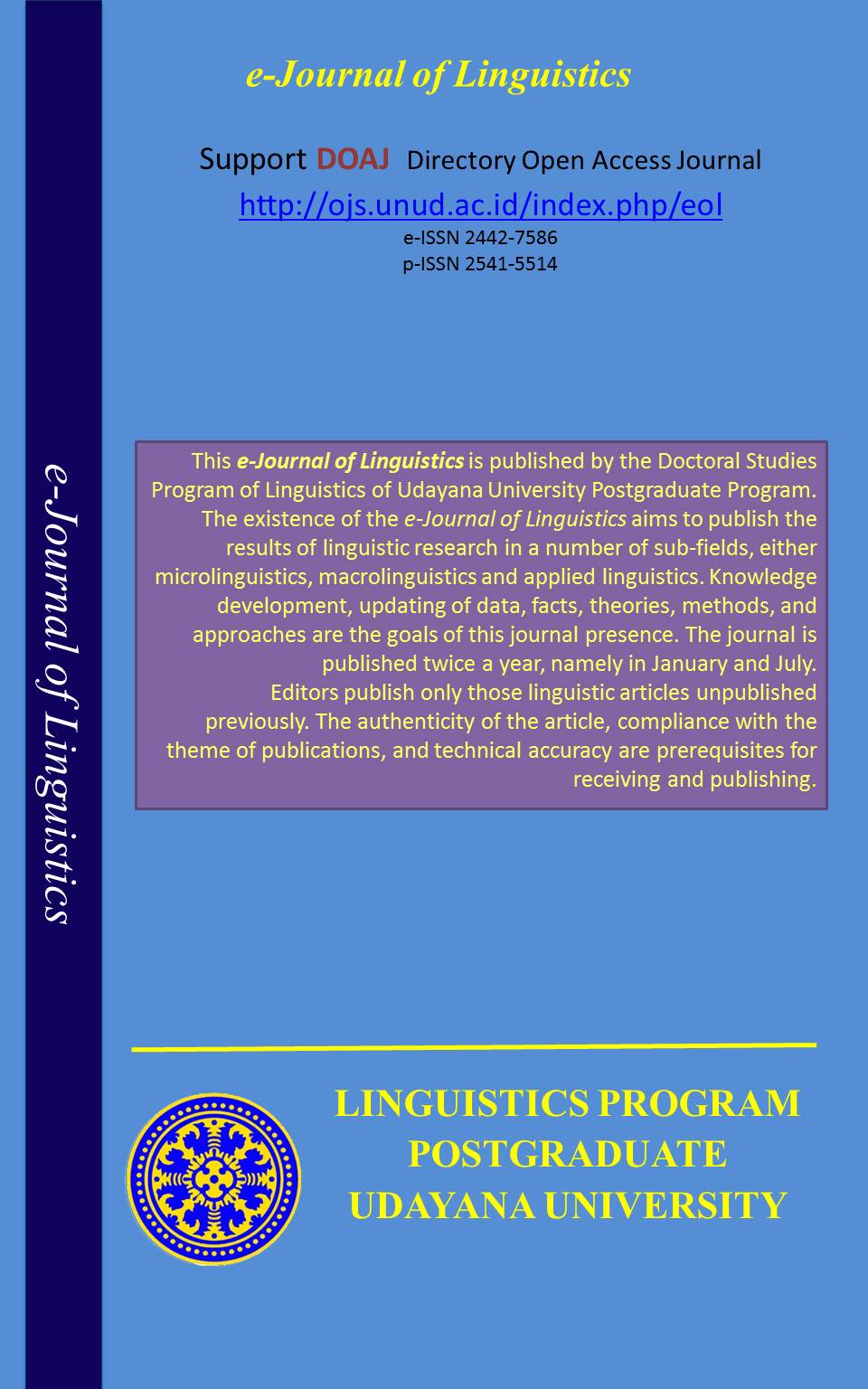Hospitality Language In Tourism Field: Facework
Abstract
This study aims to uncover, analyze, and interpret the reality of hospitality language in tourism from the perspective of the duality. The underlying assumption that language is an action in social practices. This is shown by the practice of the English language in the service interaction. The structure of the English language is like schemata of principles for service interaction and at the same time empowering service provider to perform service interaction
To uncover and interpret hospitality language practice, the theory of structuration is applied. Theory of pragmatics is used to analyze the linguistic phenomena. Based on the frame of structuration, this research is identified in four issues, namely (1) the structure of hospitality language, (2) the system of hospitality language, and (3) hospitality language as a representation facework. Problem (1) and (2) are analyzed by ethnography of communication. Problem (3) is analyzed using speech act theory and politeness theory. This study is a qualitative research, due to explore, pattern, interpreting the language practices, so it does not use statistical analysis to generalize the results. Population is not in large quantities, but using purposive sample to determine the number of informants based on the criteria and representativeness in service encounter. In addition, language behavior in general is homogeneous. Data collected by the ethnography of communication methods, observation, and recording. The data selected are English due to English as the main foreign language in the service interaction.
The findings of this study are: (1) the structure of the hospitality language, namely (a) the structure of significance in the form of setting or scene of service encounter, (b) the structure of domination, namely participants (tourism practitioners and tourists), (2) the system of hospitality language in the form of (a) the schemata interpretation of act sequences and keys, (b) the schemata of facility is instrumentality, and (c) schemes of norm are in the form of interpretation and interaction norms, (3) facework, namely: (a ) communication practices in the form of expressive speech acts, directive, representative, and commissive, (b) the exercise of power in the form of face threatening acts, (c) the practice of sanctions in the form of face-saving or redressive actions. Empirically, facework is realized in the entity to be free (negative face) and received (positive face). Based on the results of the study can be suggested(1) the structure of the hospitality language can be used by the tourism practitioners in increasing competence and performance language, (3) the system of hospitality language can be used tourism practitioners to understand modalities of language, and (3) facework in the concepts of positive and negative hospitality, can be used as strategy of tourism practices for local community, government, and investors.Downloads
Keywords

This work is licensed under a Creative Commons Attribution 4.0 International License











